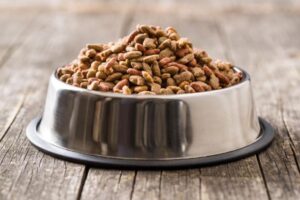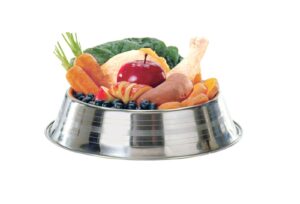NUTRITIONAL PHILOSOPHY
BUILD A BETTER BOWL – YOU ARE WHAT YOU EAT
What you feed your pet each day is the single most important decision you can make regarding their health and well being . Most disease and conditions our pets suffer from are the result of highly processed pet food, preventives made with harmful pesticides and over vaccinating. When feeding a biologically appropriate diet our pets get the proper nutrition to thrive not just survive. Eating a high quality diet and eliminating the use of unnecessary toxins your pets can live without allergies, digestive issues, behavioral issues, cancer and insure less trips to the vet. Not to mention a long healthy life to spend with you.
As pet owners become more discerning about the nutritional content of their dog’s food things can get very complicated. With so many choices to choose from in this day and age, convenience seems to be the top priority and buying a bag of kibble is definitely convenient but is it healthiest? At Golden Paws you will definitely receive the best knowledge on how to raise your beloved pets in a natural and healthy way using safe and alternative methods avoiding harmful agents in the pet industry today.
Did you know that DRY DOG FOOD has only been around for the last 60 years. Learn THE HISTORY OF DOG FOOD... https://goldenpawsnj.com/fun-facts/history-of-commercial-pet-food/
In order for thriving health to occur, all living things must consume the foods they were designed to eat. This is known as species-appropriate nutrition. Follow the Quick Nutrition Guideline below to help optimize your pets diet.
QUICK NUTRITION GUIDELINE
Dog and cat diets should…
![]() Contain only wholesome ingredients fit for human consumption. Meats and vegetables should be added to dry kibble daily. To Learn more.. BOOST YOUR DOG’S KIBBLE
Contain only wholesome ingredients fit for human consumption. Meats and vegetables should be added to dry kibble daily. To Learn more.. BOOST YOUR DOG’S KIBBLE
![]() Have NO chemical additives or preservatives, fillers or by-products. Examples of these would be corn, wheat, soy, by-products, chemical preservatives, and artificial food color.
Have NO chemical additives or preservatives, fillers or by-products. Examples of these would be corn, wheat, soy, by-products, chemical preservatives, and artificial food color.
![]() Be high in meat protein and low in grains and carbohydrates. Dogs are carnivores and it is not biologically appropriate for them to metabolize grains.
Be high in meat protein and low in grains and carbohydrates. Dogs are carnivores and it is not biologically appropriate for them to metabolize grains.
![]() Include some raw food or digestive enzymes daily.
Include some raw food or digestive enzymes daily.
![]() Offer variety and rotation of protein sources and other ingredients.
Offer variety and rotation of protein sources and other ingredients.
![]() Be as minimally processed as possible to preserve nutrients.
Be as minimally processed as possible to preserve nutrients.
![]() Be high in moisture, especially the feline diet.
Be high in moisture, especially the feline diet.
![]() Be close to a dog or cat’s ancestral diet.
Be close to a dog or cat’s ancestral diet.
![]() Be balanced over time, not necessarily in every bite.
Be balanced over time, not necessarily in every bite.


